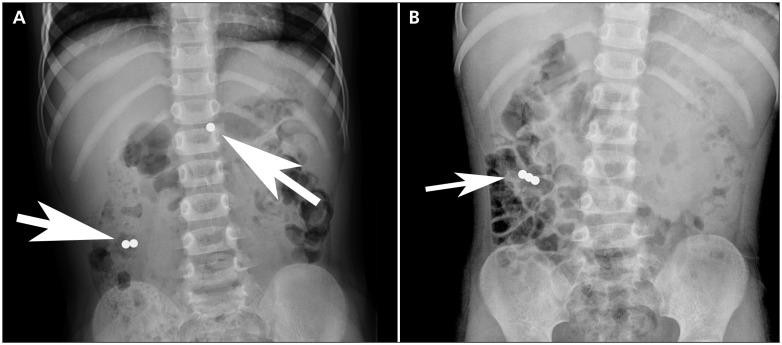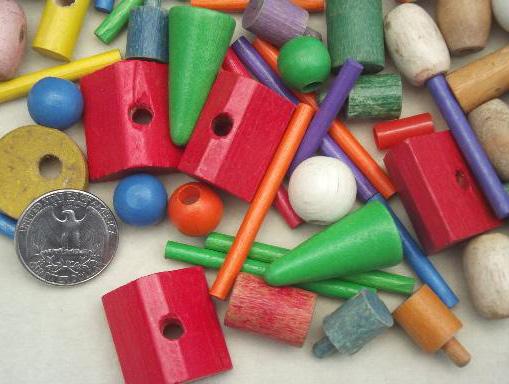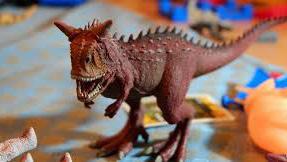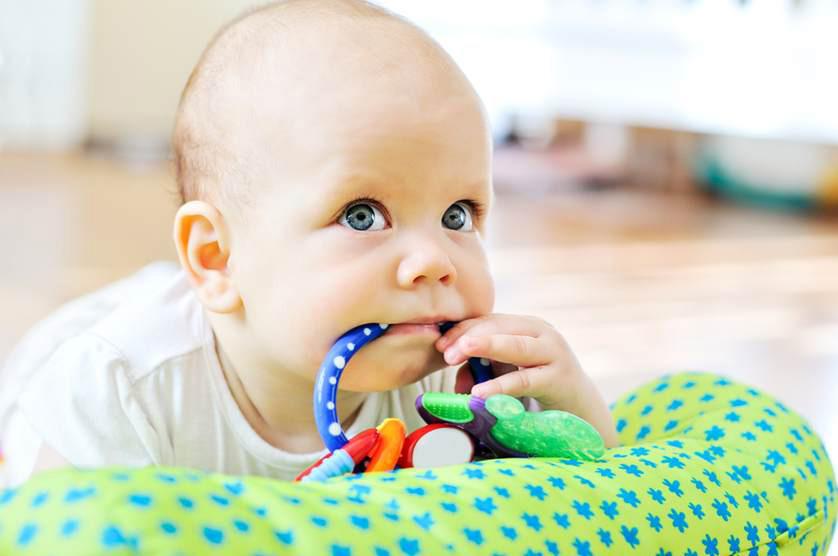
7 minute read
Toys safety guidelines
This study is done to find out the standard practices to ensure safety in the products to be designed. Things like potential hazards, guidelines for parents and buyers, saftey regulations of the makers are studied.
Toy safety is the practice of ensuring that toys are safe, usually through the application of set safety standards. [9]
Advertisement
Potential Hazards:
Ingestion of magnetic parts - Increasing popularity of strong magnets as toys has led to their ingestion by children, putting them at risk of potentially harmful gastrointestinal tract injuries. [10] Choking or aspiration of small parts of the toy - A choking hazard is any object that could be caught in a child’s throat blocking their airway and making it difficult or impossible to breathe. Cuts by sharp parts of the toy - Toys made of brittle plastic or glass can break easily, exposing sharp points and edges. Wooden, metal, and plastic toys sometimes have sharp edges due to poor construction Propelled objects - Motor toy vehicles incidents involving hair - Projectiles – guided missiles and other flying toys – can be turned into weapons and cause injury, to the eyes in particular Chemical substance - In order to make toys more rigid or flexible, or to make them flame retardant, manufacturers add chemicals to the plastic, paint and fabric. Toys can contain toxic chemicals such as BPA, PVC, lead, phthalates, cadmium, chlorine, and arsenic. [11]
Image.12. Radiographs (anteroposterior view)
Image.13. Small parts in toys

Image.14. Sharp edges in toys

Essential safety requirements: [12] Image.15. Toy dart gun

Image.16. Putting toys in mouth
1.
2. General risks: The health and safety of a. Children b. Other people such as parents or caregivers Particular risks a. Physical and Mechanical b. Flammability c. Chemical- Chemicals that are susceptible to cause cancer, change genetic information, harm fertility or harm an unborn child are not allowed in the accessible parts of toys beyond concentration limits. 19 ‘heavy elements’ like mercury and cadmium are not allowed inaccessible toy parts while 55 allergenic fragrances have been banned. d. Electrical e. Hygiene f. Radioactivity risks
Safety regulations in the United States of America: [13]
In August 2008, the Consumer Product Safety Improvement Act (CPSIA) was passed. It restricts the amount of lead and phthalates that may be contained in children’s products (ages 12 and under) and adopts the provisions of the American Society for Testing and Materials (ASTM) Consumer Safety Specifications for Toy Safety. After the revision in 2016, it includes:
1. New labelling requirements for toys that have certain coin/ button batteries
2. 3. 4. 5. 6. Temperature and current limiting requirements for lithium-ion batteries New requirements for materials and toys that could expand if accidentally swallowed New soaking and compression tests for magnets Revised requirements for toys involving projectiles Clarification of requirements and supplemental guidance for impact hazards
Toy Safety Guidelines:
1.
2.
3.
Age appropriate toys: Most toys show a “recommended age” sticker. Parents and caregivers should be aware of the child’s abilities and maturity level to determine what toys to buy. E.g. Toys with projectiles, toys with small parts for younger age groups.
Well made toys: Toys that are passed down from older relatives or siblings that contain buttons, batteries or yarn that can be chewed or snapped off should be avoided. Parents should ensure that the parts of the toy are securely attached and that none of the parts has sharp edges or paint that is peeling off.
Toys should be big enough to avoid choking. Small parts regulation: A small part is any object that fits completely into a specifically designed test cylinder 2.25 inches long by 1.25 inches wide that approximates the size of the fully expanded throat of a child under three years old. Toys should be large enough — at least 1¼ inches (3 cm) in diameter and 2¼ inches (6 cm) in length.
The small part regulation prevents deaths and injuries to children under three from choking on, inhaling or swallowing small objects they may “mouth” by banning toys and articles that are or have small parts or that produce small parts when broken. These products include a wide range of articles such as toys, dolls, puzzles, nursery equipment, infant furniture and equipment such as playpens, strollers, baby bouncers and exercises.
Articles excluded from the small parts regulation:
a. Balloons b. Books and other articles made of paper c. Phonograph records d. Writing materials such as crayons, chalk, pencils and pens e. Modelling clay and similar products f. Finger paints, watercolours and other paint sets
4.
5.
6.
7.
8.
9.
These are exempted because they cannot be manufactured in a way that would prevent them from breaking into small parts when subjected to use and abuse testing. Children’s clothing and accessories such as shoelace holders and buttons, and grooming, feeding and hygiene products such as diaper pins and clips, barrettes, toothbrushes, drinking glasses, dishes and eating utensils are also exempt because they need to be small to perform their intended purpose.
Toys and games that are or contain small parts as manufactured which are intended for use by children from 3 to 6 years old must be labelled to warn purchasers not to buy them for children under 3 years old because those children could choke on the small parts. Marbles, small balls, and balloons also require similar warnings. (Small Parts for Toys and Children’s Products Business Guidance | CPSC.gov, 2017)
Making sure that the child is physically ready for the toy: Buying a bigger bike to save money the next year can lead to serious injury if a child doesn’t have the skills to control the bigger bike.
Latex components: Uninflated balloons or pieces of burst balloons can form a tight seal in a child’s airway and make it impossible to breathe.
Lightweight toys: Injuries can happen if a heavy toy falls on the child.
Toys with a string or cord longer than 12 inches: A cord can easily wrap around a young child’s neck, causing strangulation
Toys with small magnets: Two or more magnets when swallowed can be attracted to each other through intestinal walls, twisting and pinching the intestines and causing holes, blockages, infection, or worse if not discovered and treated promptly. It is recommended that toys made for children under the age of 14 years not include magnets.
Toxic toys: Phthalates or “plasticizers” are used to make plastic more flexible and durable, and these chemicals are found in many toys. Cadmium, lead, mercury and arsenic are found in dolls, action figures, children’s jewellery and stuffed animals.
a. Total Lead Content: All children’s products manufactured must not contain more than 100 parts per million (ppm) of total lead content inaccessible parts.
b. Lead in Paint and Similar Surface Coatings: All children’s products must not contain a concentration of lead greater than 0.009 per cent in paint or any similar surface coatings.
The following materials are exempted from lead testing:
1. 2. 3. 4. Pure wood (not plywood or other composites) Paper and products made from cellulosic fibre Certain plant-derived and animal-derived materials such as animal glue, bee’s wax, etc. Certain natural and synthetic textiles, such as cotton, wool and polyester: Fabrics that do not contain lead can be affected by printing or dyeing. Textiles should not be treated or adulterated in any way with the addition of materials that could result in the addition of lead into the material. Dyes are not considered to be a material that may result in an addition of lead. After-treatment applications like screen prints, transfers, decals etc. can lead to the addition of lead and can be avoided by using ‘dye-like’ ink .
Key Insights:
There are lot of regulations by various organisations to ensure safety of toys, yet they are often missed or overlooked by the manufacturers for reasons like variation in type of products manufactured (e.g. a manufacturer specializing in Injection moulding may at the same time be producing toys as well as parts of cars). The designer should be able to provide and measure exact requirements to lessen decisions for manufacturers. Although some parts like baloon, are exempted from size and material regulations, using those for any products must be done responsibily. Using colors in parts of toys should be limited to minimum, light colors requires less amount of paints and hence is less toxic than dark colors.
3.4. Role of parents in child’s play
Between the ages of two and four, the child is undergoing the Spectator and Parallel play stages, which means, that the child needs the same age peers around him/her. A child tends to imitate what others around him/her are doing, parental participation can be an efficient source of learning. Parents are also the primary facilitators for the child, their choices in buying toys and other materials heavily influence the childs development.





